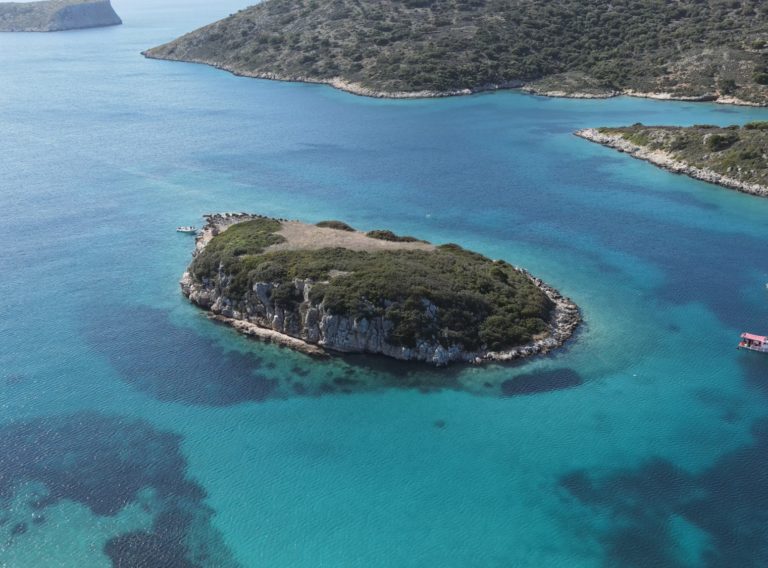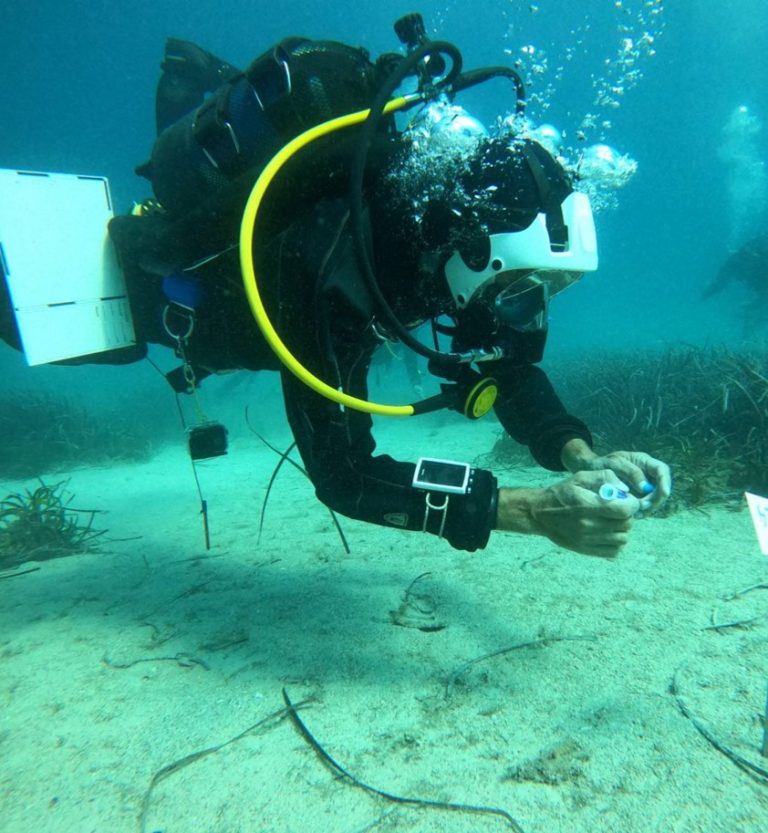history of research
τηε history of research at agios petros
The archaeological importance of Agios Petros is already well known among Aegean prehistorians. Founded by a community of farmers, fishermen and seafarers, which arrived by sea from the east in this safe anchorage and well protected bay of the Northern Sporades, the site presents a unique archaeological example of an island settlement with a dozen stone structures (houses) which were gradually submerged as the sea level was rising at a rate which is difficult to estimate without detailed studies (planned for the 2022 season).
The underwater investigations of 1981 (published in 1983) by the world expert on submerged landscapes and sites, oceanographer Dr. Nic Flemming, produced an amazing account of submerged archaeological evidence including ceramics, stone tools and animal bones. It confirmed that a great part of the Neolithic settlement was still intact in the submerged area off the north-west side of Agios Petros.
Forty years later and with new technologies the time has come for us involved in the 1981 fieldwork to return to the site of Agios Petros with an extended team and conduct a more systematic and detailed study of the site. New techniques of surveying, recording and studying underwater prehistoric sites and their remains open some exciting prospects for the renewed work at Agios Petros.

